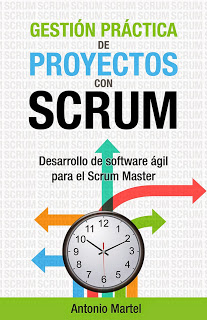Nearly 15 years ago, in 2001, 17 software developers met in Utah. They were critical of the then popular software-development models, which they considered rigid or heavy. That meeting included people like Kent Beck, Martin Fowler or the Scrum founders. They had decided to meet in order to talk about the new techniques and processes to develop software.
That meeting gave rise to a number of principles governing the new alternative (and Agile) methods they were proposing: the
Principles behind the Agile Manifesto. One of these principles is:
Our highest priority is to satisfy the customer
through early and continuous delivery
of valuable software.
Clearly, this is what should be done in any type of development. We start every project with that in mind, but soon people start getting into a rush. Our director asks how many hours we’ve spent (and we’ve spent a lot already). Our client asks when all the features will be ready. Our workmates ask if they can take that two-week holiday we owe them.
It starts to look ugly. We’re in a mess again. We have to redo the Gantt chart with the new delivery deadlines, we have to look for another set of dates for those holidays (even our own holidays), and we have to give the director loads of explanations. “The client requested lots of changes” “The technology was new.” “We miscalculated.”
Here’s where we should be firm and ask the team for some extra effort, and decline little changes requested by the client. If it isn’t written exactly like that in the contract we signed or the minutes of a meeting we had six months ago, we’re sorry but we can’t do it.
The thing is, clients also did this. They wrote a very clear contract in which they stated each and every feature that they wanted (or the ones they wanted when they drafted it). Maybe they no longer needed those features or had realised that there were other, more important things, but they’re in the contract and they should be done. The project cannot end and leave 30% of undeveloped functionality.
At the moment, we have lost sight of what should be our top priority in our job: early and continuous delivery of valuable software. From here on, there are just tough negotiations and a contract that we would try to fulfil as soon as possible with the least amount of damage possible.
The contract might have tonnes of clauses and stipulations, but regardless of what it says, what the client wanted on signing it was a solution to the problem at hand, not an argument about whether to implement one functionality or another.
But if we deliver our software early and often, we can let clients test it and use it and tell us what they think. We can allow them tell us if there is something missing or what could be improved. They will want us to implement things they find they now need, and they will be delighted in turn to take out that .rpt file-exporting feature that no one remembers requesting or knows why it was requested in the first place.
When we finish the project, the client will have a product that really solves their problems, one that has been evolving while they learned, and one that they have been able to use and test from the early stages of the project. It sounds better for both the provider and the client, right?
“How do you
manage a project when you have received no previous training in project
management? Well, by suffering a lot.”
Albert Cubeles
You can find texts like this and many other about how to manage agile projects in my book Agile 101: Practical Project Management (available on Amazon).
Translation by Begoña Martínez. You can also find her on her LinkedIn profile. Proofreading by David Nesbitt.












